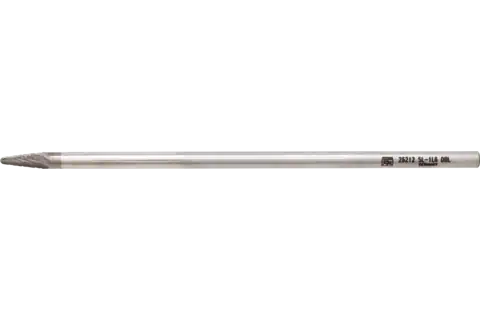Tungsten carbide burs for versatile use, Double cut, 14° Taper bur with radius end – Shape L
Carbide Bur SL-1L6 14° Taper Double Cut 1/4" x 5/8" x 1/4" Shank
Technical information
Carbide Bur SL-1L6 14° Taper Double Cut 1/4" x 5/8" x 1/4" Shank
- Item number
Global part number - 21726212
- Angle
- 14 °
- Cut
- Double
- Dia. external
- 1/4 Inch
- Dia. shank
- 1/4 Inch
- EDP no.
- 26212
- Length, cut
- 5/8 Inch
- Length, shank
- 6 Inch
- Overall length
- 6-9/16 Inch
- RPM, grey cast iron, white cast iron
- 6.000 - 13.000 RPM
- RPM, hardened, heat-treated steels over 370 HV (38 HRC)
- 8.000 - 15.000 RPM
- RPM, high-temperature-resistant materials
- 8.000 - 15.000 RPM
- RPM, rust and acid-resistant steels
- 8.000 - 15.000 RPM
- RPM, soft non-ferrous metals
- RPM
- RPM, steels up to 370 HV (38 HRC)
- 8.000 - 15.000 RPM
- Radius corner design
- 0.055 Inch
- SCTI-No.
- SL-1L6
- Packaging unit
- 1 piece
Description
Advantages
Recommendations for use
Safety notes
- Workpiece materials
- Applications
- Compatible power tools

